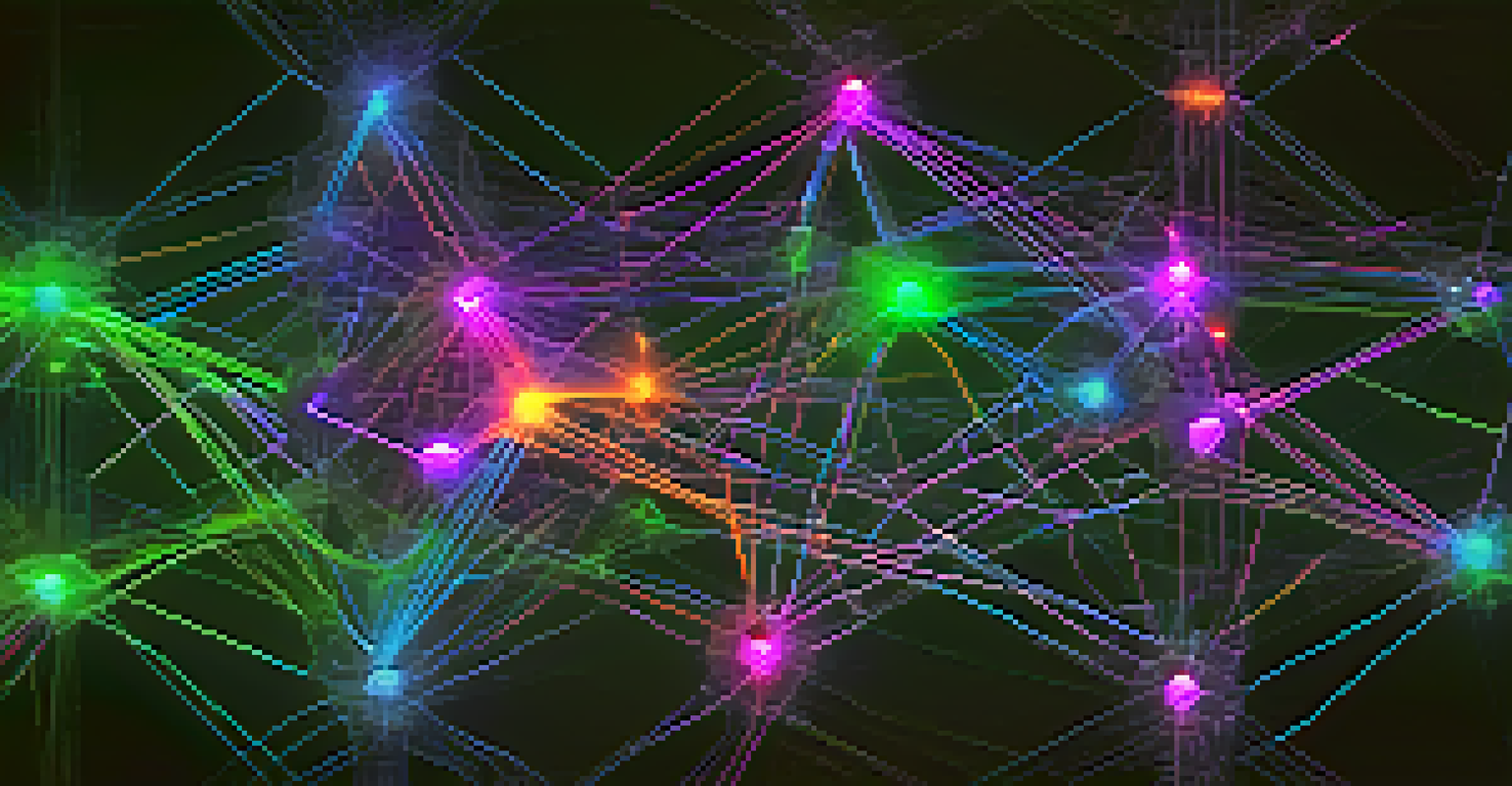Consensus Mechanisms and Their Governance Implications

What Are Consensus Mechanisms in Blockchain?
Consensus mechanisms are protocols that ensure all nodes in a blockchain network agree on the state of the data. Think of it like a group project where everyone needs to agree on the final presentation. Without a consensus, discrepancies can arise, leading to a lack of trust and reliability in the network.
In blockchain, consensus mechanisms are the backbone of trust, ensuring every participant has a voice in the network’s governance.
Different types of consensus mechanisms, such as Proof of Work (PoW) and Proof of Stake (PoS), serve unique purposes and have varying implications for governance. For example, PoW relies on computational power, while PoS emphasizes the ownership of tokens. These mechanisms fundamentally influence how decisions are made within the network.
Understanding these mechanisms is crucial for anyone involved in blockchain technology, as they directly impact transaction verification, security, and overall network efficiency. As the digital landscape evolves, so do the consensus protocols, prompting ongoing discussions about their governance implications.
The Role of Governance in Consensus Mechanisms
Governance in blockchain refers to the processes and structures that guide decision-making within a network. It’s akin to a company’s board of directors, determining how policies are created and enforced. The choice of consensus mechanism can significantly influence the governance framework, shaping how communities engage in discussions and vote on changes.

For instance, a network using PoW may have a more centralized governance structure, as those with greater computational resources can exert more influence. In contrast, PoS systems often promote a more democratic approach, where stakeholders have a say proportional to their investment. This variation can lead to different governance challenges and opportunities.
Consensus Mechanisms Ensure Trust
Consensus mechanisms like PoW and PoS are vital for ensuring all nodes in a blockchain network agree on data, fostering trust and reliability.
As blockchain technology matures, understanding these governance frameworks becomes increasingly important for developers and users alike. It fosters a more informed community that can actively participate in shaping the future of the network.
Decentralization vs. Centralization in Governance
One of the most significant debates surrounding consensus mechanisms is the balance between decentralization and centralization. Decentralization aims to distribute power among participants, reducing the risk of single points of failure or control. Centralization, on the other hand, can streamline decision-making but may lead to trust issues among the community.
The true power of a blockchain lies in its ability to create a decentralized governance model that empowers its community.
In PoW systems, for example, the concentration of mining power can create a central authority that may not represent the interests of all network participants. Conversely, PoS tends to encourage a more decentralized governance model by allowing a broader range of stakeholders to participate in the process. This dynamic is crucial for fostering trust and collaboration among users.
Ultimately, the choice between decentralization and centralization in governance can have profound implications for the network's longevity and user satisfaction. A balanced approach that considers the strengths of each model is often necessary for sustainable growth.
Impact of Consensus Mechanisms on Security
Security is a cornerstone of blockchain technology, and consensus mechanisms play a pivotal role in ensuring it. Each mechanism has its unique approach to preventing fraudulent activities and securing the network. For example, PoW relies on computational challenges that deter malicious actors due to the high costs associated with mining.
In contrast, PoS mechanisms secure the network by requiring validators to lock up tokens, aligning their interests with the network’s success. This creates a financial incentive for honest behavior, as any malicious actions could result in the loss of their staked tokens. Understanding these security dynamics is essential for participants looking to engage with a blockchain network.
Governance Shapes User Engagement
The choice of consensus mechanism impacts how communities engage and participate in governance decisions within blockchain networks.
As threats evolve, so too must the security measures employed by various consensus mechanisms. Continuous innovation in this area can help maintain the integrity and trustworthiness of blockchain systems.
Consensus Mechanisms and Community Engagement
The choice of consensus mechanism can greatly influence community engagement within blockchain networks. For instance, PoS systems often encourage active participation, as token holders are incentivized to vote and influence governance decisions. This can foster a vibrant and engaged community, where everyone feels their voice matters.
On the other hand, PoW systems may lead to a more passive user base, as many individuals may not have the resources to participate in mining or validating transactions. Consequently, understanding how these mechanisms shape user behavior can help developers design systems that promote inclusivity and active involvement.
Encouraging community engagement is vital for the long-term health of any blockchain project. By aligning governance structures with the interests of community members, networks can thrive and adapt more effectively to changing demands.
Challenges in Governance and Consensus Mechanisms
Despite their advantages, consensus mechanisms also present several governance challenges. For instance, achieving consensus can become contentious when stakeholders have conflicting interests or when significant changes are proposed. This often leads to debates and even forks in the blockchain, where a split occurs due to disagreements on governance.
Moreover, the technical complexities of different consensus mechanisms can create barriers to understanding for average users. This can hinder participation and foster a sense of alienation within the community. Education and transparency are essential in bridging this gap and promoting a more inclusive governance model.
Security Depends on Consensus Types
Different consensus mechanisms influence the security of blockchain networks by deterring fraud and aligning validators' interests with network success.
Addressing these challenges requires ongoing dialogue and collaboration among stakeholders. By fostering an environment of trust and communication, blockchain networks can navigate governance complexities more effectively.
The Future of Consensus Mechanisms and Governance
As blockchain technology continues to evolve, so too will the consensus mechanisms and their governance implications. Emerging trends, such as hybrid models that combine elements of PoW and PoS, are being explored to balance efficiency and security. These innovations could lead to more adaptable governance frameworks that better serve diverse user needs.
Additionally, the increasing focus on sustainability and energy efficiency in blockchain operations is prompting a reevaluation of traditional consensus mechanisms. This shift could encourage the development of greener alternatives that prioritize both environmental and governance considerations.

The future of consensus mechanisms will likely revolve around fostering inclusivity and adaptability. By embracing change and prioritizing community involvement, blockchain networks can create governance structures that are resilient and responsive to the needs of their users.